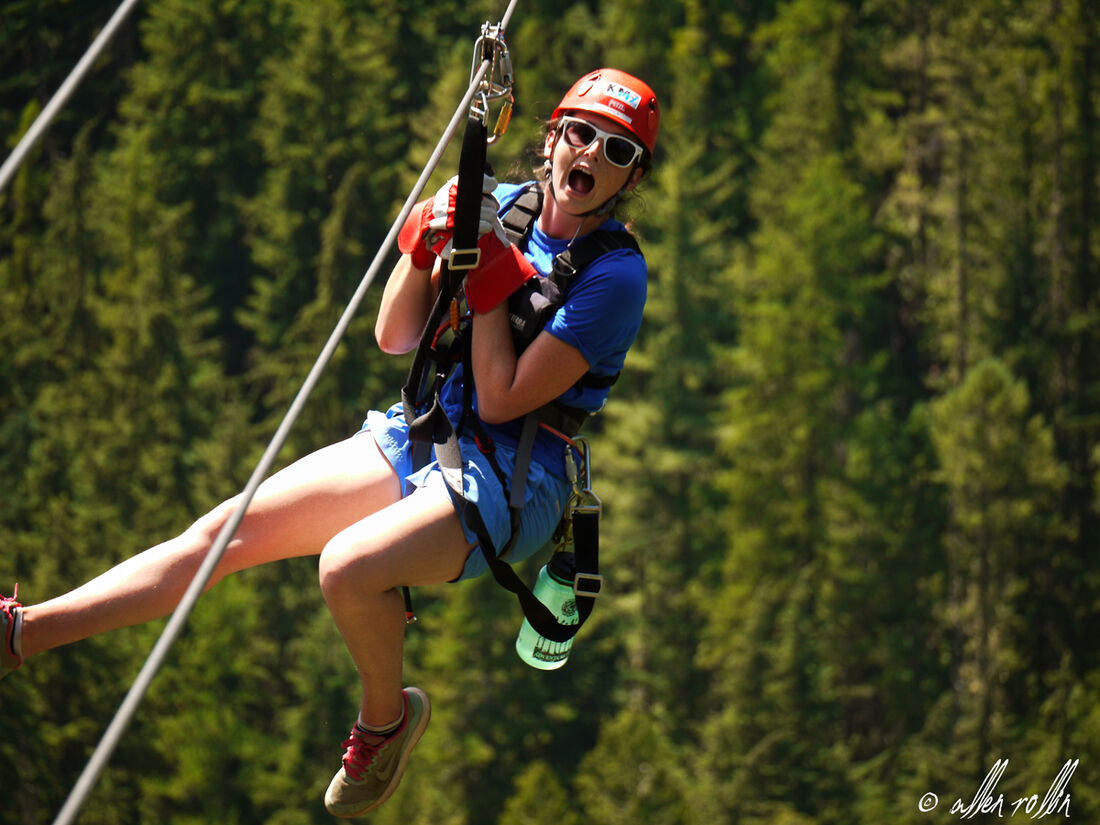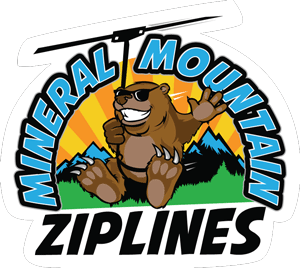
Pulleys are used to help manage friction on a zipline, keeping you speeding along the line
Zipline tours don’t just happen naturally (although wouldn’t that be cool?) and it takes some serious science and engineering to make them functional. If you’ve ever wondered how all this is possible when you’re zooming through the beautiful BC Columbia Valley in a heart-pounding, adrenaline-filled flight (though you’re probably too busy enjoying the experience) then we’re here to shed some light on what goes on behind the curtain.
The Basic Science
We don’t need to get into big scientific formulas involving drag, velocity, and air density for you to understand how ziplining works (but check out How Stuff Works for a more detailed explanation).
At its simplest, ziplines work because of gravity, which dictates that you’re pulled down the slope of the zipline. The more you weigh, the faster you travel down the slope. The steeper the slope, the faster you move. The longer the slope, the more time you have to achieve the highest speed possible (sometimes over 100km/hr!).
Physics Made Fun
Ziplines function through a few key features: gravity, friction, and air resistance. We’ve already covered how gravity pulls you towards the ground, which makes you slide along the slope of a zipline when you step off that platform.
The next force is friction. This is where a device called a pulley comes into play. Ever notice that funky metal thing attached to the zipline that you get attached to? That’s a pulley system - more specifically called a trolley. This trolley has wheels on it that roll down the metal zipline, which helps greatly reduce the friction that happens when you’re sliding.
The other force that slows you down on a zip line is called air resistance. There’s a lot of science behind it but essentially, it’s an invisible force (like gravity) that acts against the travel direction of an object - you might even notice air resistance when you’re driving in a car and traveling against the wind instead of with it. The faster you move down a zipline, the more air resistance you experience; this also results in your speed leveling out as you get further down the line.
If you want to try your hand at this science (beyond ziplining near you), try building a small science experiment and relive your high school years - or teach your kids about the wonderful world of physics!
Safety Features
Beyond the fancy science that makes our adventure tours, the key thing we focus on is your safety throughout the course. We’ve worked with biologists to assure the health and vitality of the trees our course is constructed around (and our lines are tied to) and our equipment is regularly inspected and maintained.
We ensure we have safety procedures in place for people of all ages, including requiring all riders to wear helmets and other safety equipment, covering safety rules before flying through the forest, and posting these rules in as many obvious spots as we can think of. Our highly trained and knowledgeable (and fun) staff are with you every step of the way to guide you on your zipline adventure.
So the next time you’re looking for things to do in Invermere or the Columbia Valley, come test out your newfound ziplining scientific knowledge with us at Mineral Mountain Ziplines!
Interested in more nitty-gritty details of what makes zipline work? Check out our guide: How We Make Ziplining in BC Safe and Fun.
Mineral Mountain Ziplines gives kids and their families a birds’ eye perspective of the wilderness around them. Plus, it’s a complete rush for that little adventurer inside of all of us. Visit zipmineral.com to book a tour.
